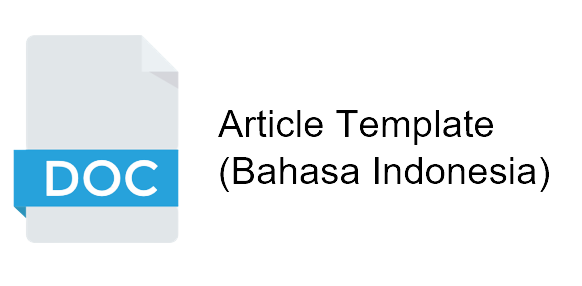Evaluasi Perangkat Lunak Electronic Record Management System (ERMS) ARTERI Menggunakan ISO 16175-2:2011
Gani Nur Pramudyo(1*), Nina Mayesti(2)
(1) Program Studi Ilmu Perpustakaan, Fakultas Ilmu Budaya, Universitas Diponegoro
(2) Universitas Indonesia
(*) Corresponding Author
Abstract
Keywords
Full Text:
PDFReferences
Arteri. (2020a). Arteri | Aplikasi Arsip Elektronik Terintegrasi. Retrieved November 12, 2020, from https://arteri-arsip.id/
Arteri. (2020b). Demo ARTERI. Retrieved November 13, 2020, from https://arteri-arsip.id/arteri-1.2.3/index.php/
Fachmi, A., & Mayesti, N. (2021). Kepatuhan Functional Requrements Hak Akses pada Electronic Records Management System Arteri. JIPI (Jurnal Ilmu Perpustakaan Dan Informasi), 6(1), 61–72.
Habiburrahman, H. (2016). Model-Model Evaluasi dalam Sistem Informasi Perpustakaan. JIPI (Jurnal Ilmu Perpustakaan Dan Informasi), 1(1), 92–101.
Hendrawan, M. R., & Ulum, M. C. (2017). Pengantar Kearsipan dari Isu Kebijakan ke Manajemen. Malang: UB Press.
International Council on Archives (ICA). (2008). International Council on Archives, Principles and Functional Requirements for Records in Electronic Office Environments – Module 2: Guidelines and Functional Requirements for Electronic Records Management Systems. New Zealand: International Council on Archives.
ISO 15489-1. (2016). ISO 15489-1: Information and documentation — Records management — Part 1: Concepts and principles. Switzerland: ISO.
ISO 16175-2. (2011). ISO 16175-2: 2011 Guidelines and Functional Requirements for Records in Electronic Office Environments. International Organization for Standardization Geneva, CH.
Jamaludin, A., Isa, A. M., & Bunawan, A. (2011). Analysis and Design of Electronic Records Management System (ERMS). Selangor.
Johare, R., Hussin, N., & Jamaludin, A. (2011). Management of Court Records: Functional Requirements Framework for Electronic Recordkeeping System RUSNAH. Asia Pacific Conference Library & Information Education & Practice, 478–487.
Johnston, G. P., & Bowen, D. V. (2005). The benefits of electronic records management systems: A general review of published and some unpublished cases. Records Management Journal, 15(3), 131–140. https://doi.org/10.1108/09565690510632319
Kurniadi, G., & Rahmah, E. (2018). Penerapan Aplikasi Arteri untuk Kegiatan Alih Media Arsip di Kantor Dinas Perpustakaan dan Kearsipan Kota Sungai Penuh. Ilmu Informasi Perpustakaan Dan Kearsipan, 7(2), 33–41.
Mukred, M., Yusof, Z. M., Mokhtar, U. A., & Manap, N. A. (2016). Electronic records management system adoption readiness framework for higher professional education institutions in Yemen. International Journal on Advanced Science, Engineering and Information Technology, 6(6), 804–811. https://doi.org/10.18517/ijaseit.6.6.1369
Rahma, N., & Mayesti, N. (2019). Pengendalian Hak Akses pada Electronic Document and Records Management System di Kementerian Kelautan dan Perikanan Republik Indonesia. Lentera Pustaka: Jurnal Kajian Ilmu Perpustakaan, Informasi Dan Kearsipan, 5(1), 33–48.
Republik Indonesia. (2003a). Instruksi Presiden No 3 Tahun 2003 Tentang Kebijakan Dan Strategi Nasional Pengembangan E-Government.
Republik Indonesia. (2003b). Keputusan Menkominfo No: 56/KEP/M.KOMINFO/12/2003 Tentang Panduan manajemen sistem dokumen elektronik, menyebutkan bahwa Sistem Manajemen Dokumen Elektronik.
Santoso, B., & Prabowo, T. T. (2021). Implementasi Aplikasi SIKS sebagai Electronic Records Management System (ERMS) di Arsip UGM. Khazanah: Jurnal Pengembangan Kearsipan, 14(1), 74–87.
Sendirian, R. (2013). Penerapan Standar Internasional Dalam Fitur Registrasi Software Sistem Informasi Kearsipan Dinamis (SIKD) Di Kementerian Pertanian. Skripsi. Universitas Indonesia.
Shonhe, L., & Grand, B. (2019). Implementation of electronic records management systems. Records Management Journal, 30(1), 43–62. https://doi.org/10.1108/RMJ-03-2019-0013
Smallwood, R. F. (2013). Managing Electronic Record: Methods, best practices, and technologies. New Jersey: John Wiley & Sons.
Zed, M. (2014). Metode Penelitian Kepustakaan. Jakarta: Yayasan Obor Indonesia.
Article Metrics
Refbacks
- There are currently no refbacks.
Copyright (c) 2023 Khazanah: Jurnal Pengembangan Kearsipan

This work is licensed under a Creative Commons Attribution-ShareAlike 4.0 International License.







